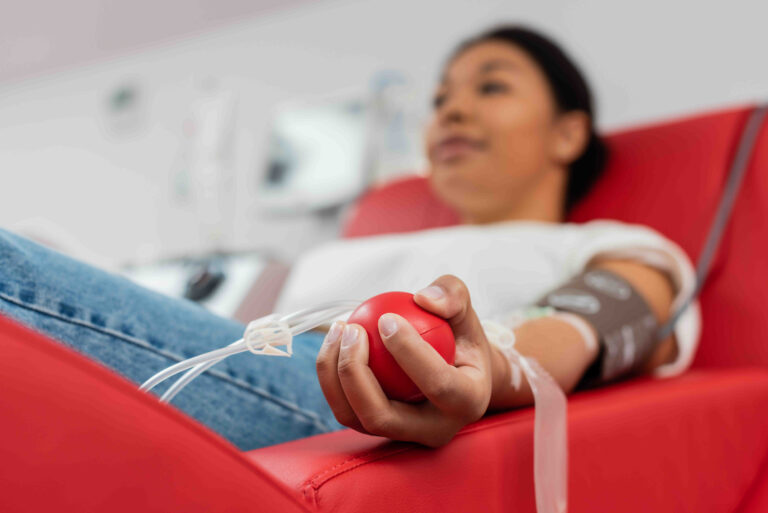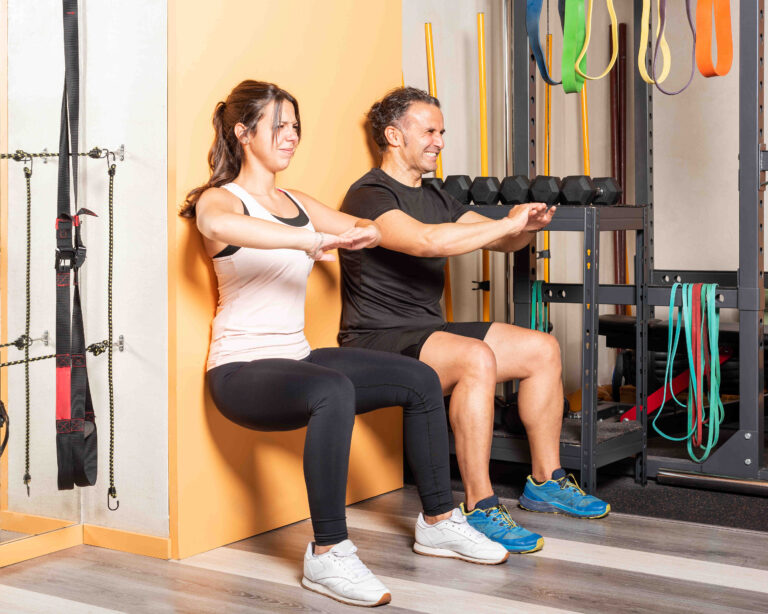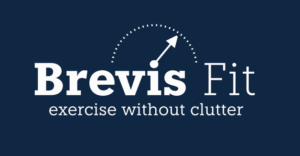Introduction
In today’s fast-paced world, prioritizing heart health is often overlooked. Yet, with the proper Exrecise program, you can journey to a stronger, healthier heart. Correct physical activity is critical to reducing the risk of heart disease. It also helps improve circulation, oxygen utilization, and muscular strength.
At BrevisFit, we are passionate about empowering individuals to take control of their health. And our mission is to guide you through this process. Our custom workout advice can help you adopt a heart-healthy lifestyle without difficulty. And it is regardless of your fitness level, whether you’re a fitness enthusiast or a total novice.
Similar to muscles, a healthy heart is a strong heart. With a stronger heart, you nourish your body more efficiently, leading to less stress on the heart itself. Another similarity with muscles is how we strengthen the heart: with precision and focus on the aspects needed to stimulate an improvement. Luckily, a correct approach to Exercise already includes the stimulus required for a stronger heart.
Understanding heart health and its importance
The heart is a vital organ that pumps blood throughout the body. It delivers essential nutrients and oxygen to various tissues and organs. A continuous circulation of oxygen-rich blood in the heart occurs through a network of arteries and veins. It ensures the delivery of nutrients while removing waste products. This relentless pumping action sustains life by maintaining the body’s vital functions. At the same time, it supports the proper functioning of organs and tissues. The heart is a muscle that works nonstop. For that, a constant supply of energy is required, which is why the heart’s primary energy source is fat [1].
The benefit of Exercise for heart health
Regular physical activity provides several benefits for cardiovascular wellness. Aerobic exercises, including walking, jogging, swimming, and cycling, can boost heart health. These activities elevate the heart rate, promoting increased blood flow and oxygen delivery. While an increased heart rate improves cardiovascular function, the main factor driving long-term improvements in heart health is the increase in stroke volume—the amount of blood the heart pumps out in a single beat.
The benefit of Exercise comes from improved Cardiac Perfusion
Cardiac perfusion is the rate at which the heart muscle gets filled with oxygen [5, p. 51]. This aspect is the most crucial element for heart health per se. To improve cardiac perfusion, we need to improve the amount of blood delivered in a single beat – the stroke volume. This is done by making the heart push as much blood in a single beat. When stroke volume increases, more blood gets pumped out of the heart every beat. This means that an improved stroke volume leads to better nourishment and oxygenation of our whole body. This also means that the heart needs to work less. An improvement in that department can be easily observed with a decrease in the resting heart rate. Therefore, a stronger heart worns out slower.
Aerobic activities prevent direct improvement of stroke volume
The primary aim of steady-state aerobics is to sustain an elevated heart rate, contributing to cardiovascular fitness. However, constant higher heart rates may reduce diastolic filling time, potentially limiting stroke volume. This relationship aligns with the Frank-Starling law, stating that the force of cardiac muscle contraction is directly proportional to its initial length. As blood volume (preload) entering the heart increases, the myocardium stretches, leading to a more forceful contraction during systole [6]. Consequently, a shorter interval between heartbeats, as often seen in steady-state activities, may limit the volume of blood entering the heart chamber, potentially affecting the intensity of contractions. For that reason, so called aerobic activity actually limits the potential hearth health associated benefits of physical activity.
On the extreme end, adherence to prolonged steady-state activity has been associated with potential issues such as premature ventricular contractions, atrial fibrillation, and coronary artery calcifications [7], [8]. However, these concerns are typically linked to extreme durations rather than the moderate and controlled steady-state exercises commonly recommended for cardiovascular health. While we do not assert that steady-state activity leads to heart problems when done in moderation, we want to emphasize the indirectness of targeting stroke volume through such activities. More time-efficient and joint-safe approaches exist for this aspect, particularly in the form of correct Exercise, which includes inducing deep muscular fatigue.

The importance of the venous pump
The importance of the venous pump cannot be overstated when considering myocardial perfusion and overall heart health. Central to this concept is the significance of stroke volume in ensuring an optimal blood supply to the heart muscle. Therefore, activities aimed at promoting heart health should prioritize the enhancement of stroke volume.
Engaging in steady-state exercises that maintain a consistent heart rate is particularly beneficial, as it facilitates the efficient filling of the heart chambers and promotes smooth circulation. This is intricately tied to the functioning of our cardiovascular system, where the heart pumps oxygenated blood into the arteries during systole. However, the heart cannot autonomously draw deoxygenated blood from the veins. Deoxygenated blood is retrieved through a dynamic process involving muscle contractions and venous valves, aka. The venous pump.
Muscle contractions, acting as a venous pump, are vital in pushing deoxygenated blood back towards the heart. The interaction between these muscle contractions and the venous valves is crucial. Venous valves, strategically positioned within the veins, ensure a unidirectional flow by preventing backward movement of blood. During muscle contractions, these valves open, allowing deoxygenated blood to flow efficiently towards the heart.
The venous pump encapsulates the entire mechanism of muscle-venous valve interaction, illustrating its pivotal role in maintaining proper circulation and supporting myocardial perfusion. Understanding and incorporating activities that optimize the venous pump contribute significantly to heart-healthy practices.

Exercise directly improves the venous pump
Exercise plays a vital role in improving the venous pump. The more blood the heart receives, the more efficiently it pumps out. This process, crucial for enhancing stroke volume, is targeted very effectively with correct Exercise. Exercise optimizes the squeezing of deoxygenated blood by engaging and fatiguing skeletal muscles. Through intense muscle contraction and constant tension, squeezing deoxygenated blood is highly enforced, thus mimicking the dynamics of the venous pump. This approach contrasts with steady-state aerobic activities, where the heart rate is elevated (too much), and the intensity of muscular contraction is low. Correct exercise does the opposite. It keeps the heart rate at a lower pace but intensifies the muscular contractions. Thus, it becomes a more focused and potent strategy for optimizing the venous pump and supporting overall cardiovascular health.

Exercise does increase the heart rate as well
Correct Exercise not only improves the venous pump but also brings advantages through an increased heart rate, even during slow and controlled movements. The heart rate is notably heightened when engaging larger muscle groups like the back, shoulders, and lower body. This effect is particularly pronounced when performing exercises consecutively in rapid succession.
Other benefits of exercise related to heart health
Exercise also aids in weight management, reducing the strain on the heart. Maintaining a healthy weight prevents obesity and metabolic syndrome. These health issues can damage the heart. Exercise helps manage blood sugar, cholesterol, and blood pressure. Finally, strength training enhances the body form. And at the same time, it reduces fatigue from daily physical stressors [9]. These combined benefits create an environment conducive to heart health and well-being.
Correct Exercise not only improves the venous pump but also brings advantages through an increased heart rate, even during slow and controlled movements. The heart rate is notably heightened when engaging larger muscle groups like the back, shoulders, and lower body. This effect is particularly pronounced when performing exercises consecutively in rapid succession.
Creating an exercise plan for heart health
Developing an exercise plan for optimal heart health requires just 20 minutes per week if your primary focus is on health and longevity. Prioritizing muscle fatigue through intense contractions in key muscle groups is crucial. Incorporating exercises such as squats, rows, and presses forms an excellent foundation for enhancing your cardiovascular system. Emphasize constant tension, aiming each exercise to last 60 to 120 seconds. Select 1 to 2 exercises for each major muscle group, performing them consecutively for maximum effectiveness.
This approach offers dual benefits for heart health: an increased heart rate akin to typical aerobic activities and improved stroke volume. Beyond muscular size and strength gains, this regimen delivers heart-related advantages. In time constraints, prioritize correct Exercise initially. While aerobic workouts are beneficial, focusing on 20 minutes of intensive Exercise yields optimal results. For those finding extensive jogging impractical, this condensed routine proves highly beneficial. Additionally, be mindful that prolonged steady-state activity may lead to injuries and joint pain, potentially hindering your ability to engage in any physical activity, including correct Exercise.

Monitoring your progress and making adjustments
As you embark on your journey to improve your heart health through exercise, it requires monitoring and adapting. Keeping track of the key indicators is a critical step on this journey. Your heart rate, exercise duration, and perceived exertion during daily activities and workouts. One common remark if you are new to exercise is the so-called exercise-induced headache. It shows your venous pump struggling to meet increased blood supply demand.
Exercise Induced Headache
Exercise headaches happen when your muscles squeeze hard during a workout and need more blood to keep up. When working out intensely, your veins, like blood vessels, have a tougher time sending blood back to your heart. This causes the blood to gather around your head and neck, creating extra pressure in the nearby arteries. The increased pressure helps your heart do a better job of pumping blood.
Imagine it like this: when you’re giving your all during a workout, your heart is pumping faster, and at the same time, your muscles are squeezing tightly. This momentary squeeze slows down the usual blood flow back to your heart. It’s like a temporary traffic jam. This upset in the balance between muscle squeezing and blood returning can lead to increased pressure in your head, causing exercise headaches.
The good news is that as you exercise over time, your veins improve at handling the pressure, and those exercise-induced headaches should happen less often. This is a positive sign that your body’s plumbing system (venous pump) is improving.

Conclusions
In conclusion, the power of correct Exercise in improving the heart cannot be understated. By understanding the impact of exercise on the cardiovascular system, you pave the way for a robust and enduring heart. Most people know that aerobic activities are suitable for your heart. However, we’ve claimed that it works better with the correct Exercise. Different from aerobics, correct Exercise involves improving the stroke volume. It increases the demand for blood while keeping the heart rate lower than in aerobics. And it is this mechanism that is at the core of improving your heart health.
At BrevisFit, we strive to partner with you to improve your health via Exercise. We are committed to the idea that regular exercise substantially affects your health and boosts your fitness. Correct Exercise and a heart-healthy diet can sustain coronary health and an active lifestyle.
Literature
[1] B. Wittels and R. Bressler, “Lipid metabolism in the newborn heart.,” J. Clin. Invest., vol. 44, no. 10, pp. 1639–1646, Oct. 1965.
[2] S. Knez, “The Purpose Of Exercise,” BrevisFit. Accessed: Apr. 24, 2021. [Online]. Available: https://brevis-fit.com/the-purpose-of-exercise/
[3] S. Knez, “Defining Exercise: Theoretical Concepts,” BrevisFit. Accessed: Apr. 21, 2023. [Online]. Available: https://brevis-fit.com/defining-exercise-theoretical-concepts/
[4] S. Knez, “Defining Exercise: The Intensity – Safety Quadrant,” BrevisFit. Accessed: May 30, 2021. [Online]. Available: https://brevis-fit.com/the-intensity-safety-quadrant/
[5] K. Hutchins, Music and Dance: Critical Factors of Practice and Conditioning, 2nd ed. Serious Exercsise, LLC, 2017.
[6] A. V. Delicce and A. N. Makaryus, “Physiology, Frank Starling Law,” in StatPearls, Treasure Island (FL): StatPearls Publishing, 2023. Accessed: Nov. 25, 2023. [Online]. Available: http://www.ncbi.nlm.nih.gov/books/NBK470295/
[7] C. Vlachopoulos et al., “Arterial Stiffness and Wave Reflections in Marathon Runners,” Am. J. Hypertens., vol. 23, no. 9, pp. 974–979, Sep. 2010, doi: 10.1038/ajh.2010.99.
[8] R. S. Schwartz et al., “Increased Coronary Artery Plaque Volume Among Male Marathon Runners,” Mo. Med., vol. 111, no. 2, pp. 89–94, 2014.
[9] Y. Beniamini, J. J. Rubenstein, A. D. Faigenbaum, A. H. Lichtenstein, and M. C. Crim, “High-Intensity Strength Training of Patients Enrolled in an Outpatient Cardiac Rehabilitation Program,” J. Cardiopulm. Rehabil. Prev., vol. 19, no. 1, p. 8, Feb. 1999.
[10] H. Patel, H. Alkhawam, R. Madanieh, N. Shah, C. E. Kosmas, and T. J. Vittorio, “Aerobic vs anaerobic exercise training effects on the cardiovascular system,” World J. Cardiol., vol. 9, no. 2, pp. 134–138, Feb. 2017, doi: 10.4330/wjc.v9.i2.134.

